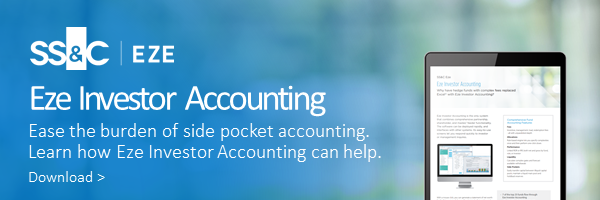High yields and liquid investments are an investor’s dream, but managing that combination for hedge fund managers can be a nightmare. Investors are still striving to find the high yields of the ’90s and early 2000s, but the market downturn of 2008 changed their focus to liquidity. Investors were redeeming from hedge funds in unprecedented numbers and forcing the funds to wind down investments in an untimely fashion to meet those cash demands.
Hedge funds were forced to reexamine how they could still achieve those coveted returns without losing investment opportunity by leaving cash on hand in case of mass investor redemptions. Firms had to manage the delicate balance of protecting the investors that were staying in the fund to realize gains while ensuring investor redemption requests could be met.
Side pockets started to rise in popularity as they allowed the portfolio managers to protect the potential returns on investments while giving them relief from the liquidity demands. Investors were given the option to participate in longer-term illiquid investments that had the potential to reap higher yields in exchange for restrictions such as capital lockups and redemption fees. Investors that chose to invest in these side pockets could protect their investments from the redemption exposure if the fund needed immediate cash.
The start of the 2020 pandemic had hedge fund managers fearing a repeat performance of 2008. We have seen significant side pocket growth with many of our clients. With this re-emerging trend comes challenges for the back-office accounting team. Side pockets can be an administrative migraine for a variety of reasons:
- Separate P/L allocations for each side pocket and its investors
- Cost vs. capital tracking challenges when capital transfers occur
- Different fee calculations in the liquid pool versus the side pockets
- Performance tracking for multiple capital pools
- Decisions on how best to report performance on illiquid investments to investors
- Capital liquidity tracking and reporting
Where do most firms turn to handle this new and complex functionality–Excel. Excel is a fantastic tool that can create as elaborate a calculation as you can write, but it is also an unaudited, open structure as reliable as the last saved change. Unfortunately, we’ve seen these errors firsthand in files our clients share with us.
- Calculation errors caused by mistyped formulas
- Errors caused by incorrect spreadsheet linking
- Unsustainable spreadsheets so large a macro is needed just to open the file
- Investors accidentally put in the wrong new issue eligibility column throwing off the entire fund
- Management fee base errors due to the inability to track cost systematically
Without a robust system designed to handle side pocket accounting, these costly mistakes will continue.
There are very few software solutions available that have the built-in intelligence to handle the complexities of side pockets–Eze Investor Accounting is one that can. We have created a workflow in our software specifically designed for our side pocket clientele to address these challenges. We considered all the complexities associated with side pockets and the needs of the funds, investors, and administrators to create a side pocket accounting solution. Side pockets don’t have to be a headache for the back-office team as long as they are equipped with the right solution to handle them. Eze Investor Accounting can help make the dream come true.
If you’re interested in easing the burden of side pocket accounting and would like to find out how Eze Investor Accounting can help, click here to find out more:


